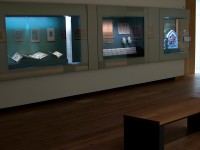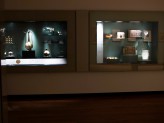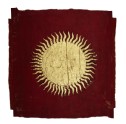Room 33 | Mughal India 1500-1900 gallery
Discover the paintings and decorative arts of the Mughal period - the most powerful and lasting of the Islamic dynasties in India.

Introduction
The most powerful and lasting of the Islamic dynasties in India was that of the Mughal emperors. Founded by Babur in 1526, the empire was consolidated by his grandson Akbar (1556-1605). Ruling from Agra, Delhi, and Lahore, Akbar and his successors became lavish and innovative patrons of art and architecture. For over a century, the Mughal court arts achieved a brilliant synthesis of Persian, Indian, and European styles. In Europe, the ‘Great Mogul' became a byword for absolute power and courtly magnificence.
Mughal artistic influence also spread to the provincial courts of the Deccani sultans and the Hindu Rajputs. By the 1760s, the empire was in decline and the British East India Company had begun to dominate the subcontinent. The arts of this later, ‘Company' period show increasingly strong European features.
Notice
Objects may have since been removed or replaced from a gallery. Click into an individual object record to confirm whether or not an object is currently on display. Our object location data is usually updated on a monthly basis, so contact the Jameel Study Centre if you are planning to visit the museum to see a particular Eastern Art object.
© 2013 University of Oxford - Ashmolean Museum











